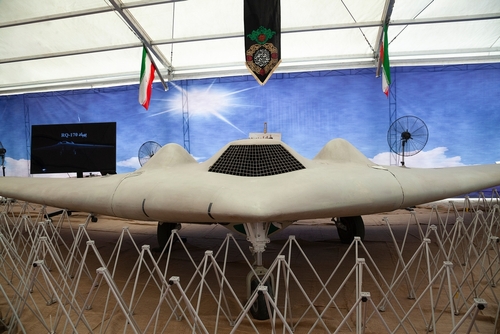Greece (Brussels Morning) For many years, Iran has been the West’s only adversary, projecting an alternative way of governing and approaching global and regional politics. Of course, Tehran does not have the same dynamics as Moscow, but Western analysts, also because of Israel, presented the country as the demon of the East. Ignoring China and its Allies. But what were the reasons that led to this approach and rivalry? And what dynamics, military and political, Iran had to contrast with the West.
The Islamic Republic of Iran has maintained opposition to the United States and the NATO Alliance’s involvement in the Middle East for the entirety of its forty-year existence. Iran uses the Islamic Revolutionary Guard Corps, also known as the IRGC, and the regular troops, also known as Artesh, to display its military might. These groups help Iran achieve two key strategic objectives: first, maintaining the regime and, second, gaining a commanding presence in the area.
To achieve strategic depth and further Tehran’s goals in the area, Iran also employs unconventional warfare operations and a network of militant allies and proxies.
Iran has also employed proxies to disseminate Shia revolutionary doctrine, which remains a key component of its foreign policy. Indeed, the dictatorship continues to threaten smaller states with force, while using ideology to incorporate Shia people into its network of partner forces. It formed the Fatemiyoun Brigade from the Hazara Shia community in Afghanistan and has dispatched this organization throughout the area to fight on Iran’s behalf.
When Iran faces powers with more modern weaponry that it cannot hope to defeat, the regime takes tremendous precautions. While Iran is not afraid to use strong rhetoric against Israel and the West, it has avoided attempting to sting the hornet’s nest because the leadership recognizes that it has little chance of winning on the battlefield. Iran also understands that playing chicken with a nuclear-armed, Western-backed opponent like Israel might end in calamity. As a result, the best course of action for Iran is to save face with words while doing relatively little militarily to offend these powerful actors.
Iran is a crucial player in worldwide energy security due to its military capabilities and coastal defenses near the Strait of Hormuz. Because tanker and transport routes pass so close to Iran’s land mass, the islands it controls in the Gulf, and its significant naval bases, Iran’s coastline is especially crucial.
Although the regime’s official policy aims to share labor among the Artesh, IRGC, and Basij in general, this policy is rarely followed: the IRGC remains the dominating player in Iran’s military machinery.
Numbers don’t lie
The Islamic Republic of Iran Army (the Artesh), the Islamic Revolutionary Guard Corps (IRGC), and the Basij Resistance Force comprise Iran’s military establishment, with Ayatollah Ali Khamene’i serving as commander-in-chief. Iran established a new unified headquarters for the Joint Chiefs of Staff, the General Command of the Armed Forces Joint Staffs, in 1992, thus uniting the Artesh and the IRGC.
The GFP index denotes Iran as a Top 20 world power. For 2023, Iran is ranked 17 of 145 out of the countries considered for the annual GFP review. The nation holds a PwrIndx* score of 0.2712 (a score of 0.0000 is considered ‘perfect’).
The Iranian military primarily depends on three main capabilities: ballistic missiles, naval forces that can pose a threat to shipping in the Persian Gulf and the Strait of Hormuz, and unconventional capabilities like using allies and proxies overseas. The Iranians have a well-publicized and contentious nuclear program, although they do not currently have the potential to produce a nuclear weapon.
In terms of active troops, the Iranian Armed Forces are the largest in the Middle East. Iran’s military forces consist of around 610,000 active-duty people plus 350,000 reserve and trained personnel who can be activated as needed, totaling approximately 960,000 personnel.
The huge tank force, on the other hand, is primarily made up of older models and completely outdated tanks. Only the new Karrar model can compete with some of the world’s best tanks. Although the Karrar resembles the well-known Russian T-90, Iran has denied any involvement with Russia in its development.
Iran uses both conventional and unconventional weapons in its hybrid warfare strategy. Iran’s military policy, from a conventional perspective, is centered on the ability to retaliate against an adversary and to deter. For that purpose Iran also possesses a large number of drones, which it has utilized in operations in both Iraq and against Israel. Despite its military potential, Iran could not be upgraded to a global superpower rather than a regional power. It is understandable that cooperation for years was impossible but the approach and integration into the international community was possible under-conditions. 5 years ago, would be impossible, but perhaps now, with the open crises in Eastern Europe, the Pacific and the Middle East, the situation will be different.



